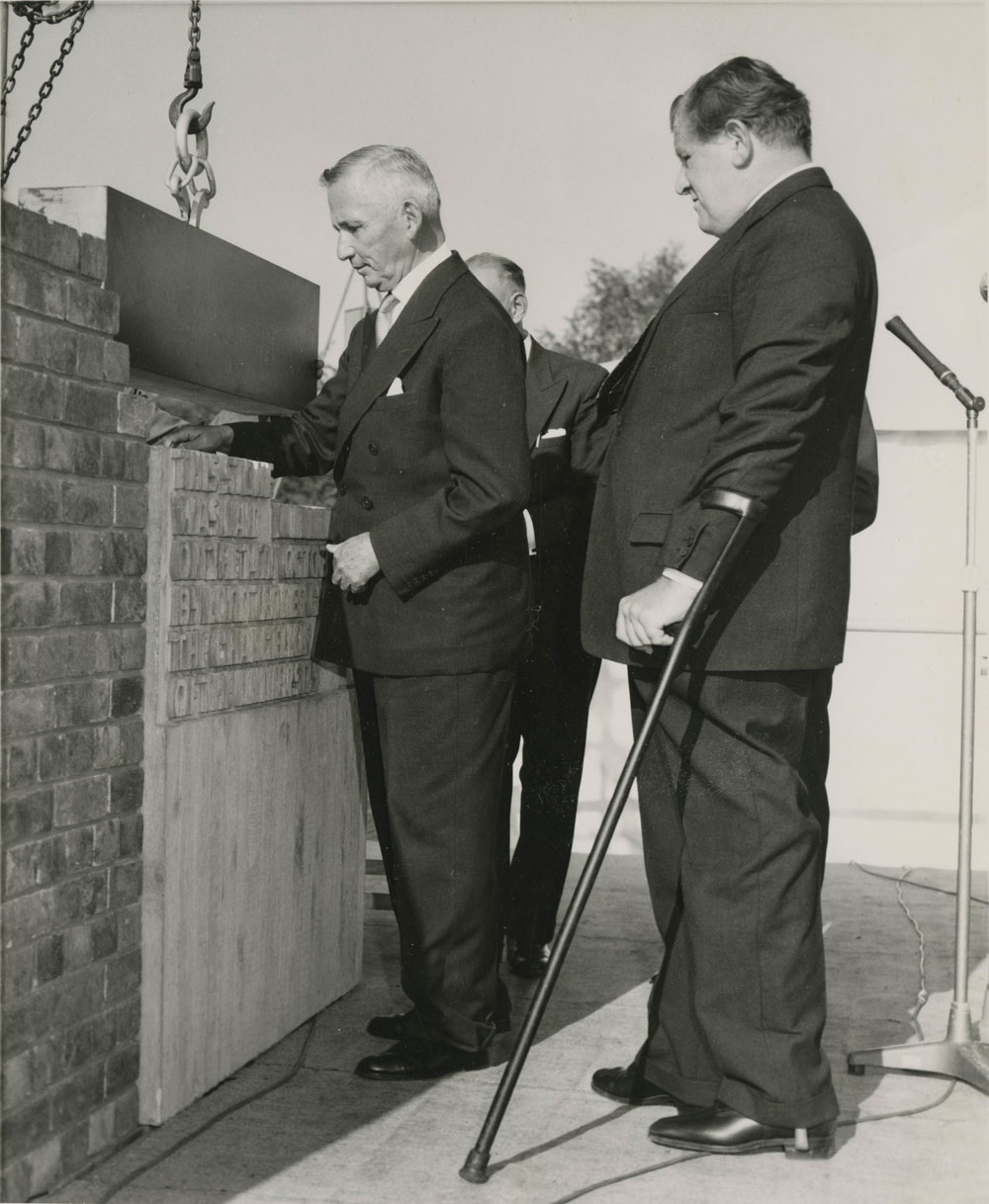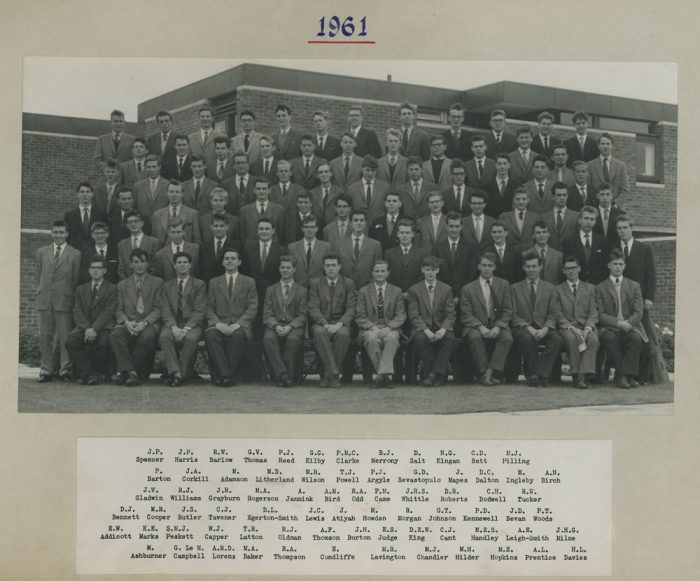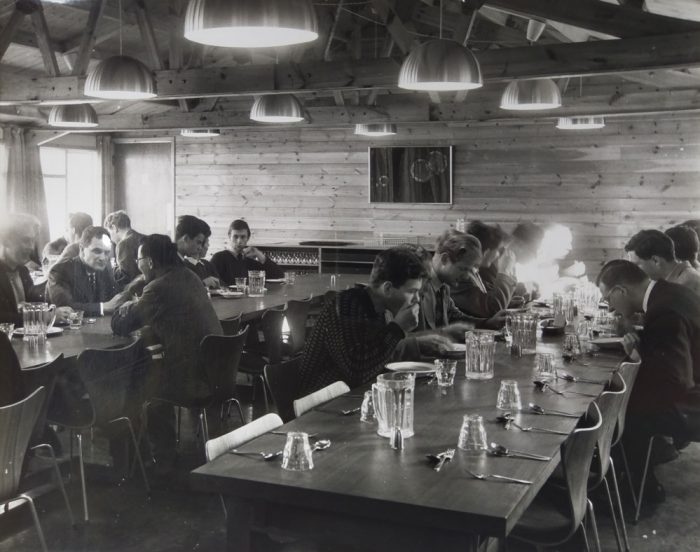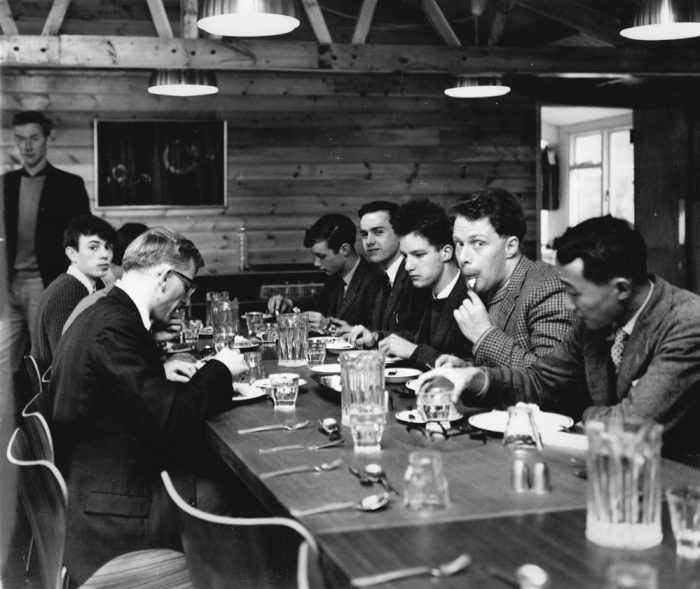The College takes shape
- First undergraduates admitted, numbering 75
- Sheppard Flats – the first building on site – completed, which provides college facilities until 1964, with dining in a neighbouring portacabin
- Building of North Court and central buildings commences
- Foundation stone laid by Lord Tedder (a College trustee)
- Joint Fellows-students committee created
- Bitter controversy over a chapel: Francis Crick resigns Fellowship
- Boat Club founded
- Socratic Society founded by D. McCormack Smyth
- ‘Lady guests’ (but not wives) permitted at High Table
- General de Gaulle gifts the tapestry ‘Etoile de Paris’
The College was not immune from divisive argument, there was the question of the place of religion in a ‘scientific age’. Historically, the universities had been the seminaries of the church, and chapel attendance was still compulsory until the Second World War. Some Fellows were deeply hostile to a proposal to build a chapel, and Francis Crick, the discoverer of DNA, resigned his Fellowship in protest. His letter to Winston Churchill explaining himself is one of the most bizarre ever sent by a great scientist to a great statesman: Crick opined that a College brothel might be more worthwhile than a chapel. The outcome of the controversy was that a chapel was built in the grounds but is not an official part of the College. A preposition saved the day: it was agreed there would be a chapel at Churchill, but not of Churchill.
Share your memories of this year
Add your own stories and photo.




First CCRFC team photo